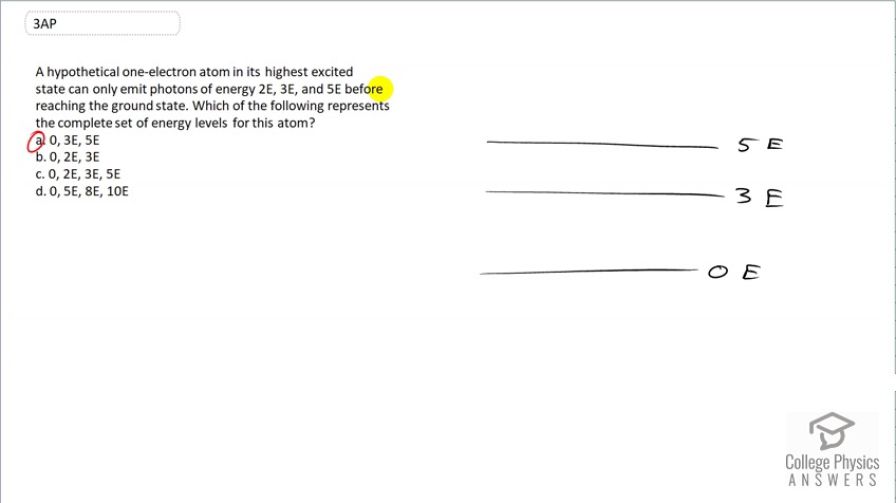Question
A hypothetical one-electron atom in its highest excited state can only emit photons of energy , and before reaching the ground state. Which of the following represents the complete set of energy levels for this atom?
Final Answer
(a)
Solution video
OpenStax College Physics for AP® Courses, Chapter 30, Problem 3 (Test Prep for AP® Courses)

vote with a rating of
votes with an average rating of
.
Video Transcript
This is College Physics Answers with Shaun Dychko. This hypothetical one-electron atom can emit photons of energy 2 times E, 3 times E and 5 times E before reaching the ground state. So here's the ground state and photons will be emitted by the different possible transitions here. So one possible transition is to go from 5E to 0; that would emit a photon of energy 5E. Another possible transition is to go from 5 to 3 which would emit a photon of energy 2E and that's the difference between 5 and 3 and then going from this state to 0 would emit a photon of energy 3E. And so this would account for the 2E, 3E and 5E photons that are emitted due to these three possible transitions and so that's why the answer is (a). If you were to choose this answer, it's a bit tempting because it has each of these energies listed in it, you'd find that things don't work because the energy diagram for this atom would be 0, 2, 3 and 5 and you would expect a photon to be emitted at this transition of an energy of 1E and we know that that's not possible because it only emits photons with this energy. And so this diagram would not work because it would add this extra energy photon that is not allowed to exist.